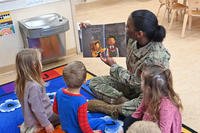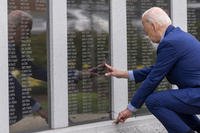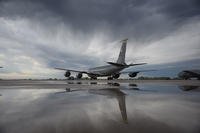Readers of Military.com responded passionately to news of a second deadly collision involving a U.S. Navy destroyer in the Pacific area of operations.
Many of you contacted our reporters and posted comments to stories on our website and Facebook page to weigh in on the tragedies.
On Aug. 21, 10 sailors died after the destroyer USS John S. McCain collided with the Liberian-flagged tanker Alnic MC in waters east of Singapore. On June 17, seven sailors died after the destroyer USS Fitzgerald struck the Philippine-flagged ACX Crystal cargo ship southwest of Tokyo.
Here are a sampling of reader responses that have been edited for clarity:
View Every Contact as a Threat
I am a 1962 graduate of the United States Naval Academy and a retired captain. There is one paramount rule for the handling of a warship: Every contact; be it surface, submerged, or airborne, must be viewed a threat. Every attention must be paid to being able to position your vessel to engage or avoid every contact. Anything less is flagrant dereliction of duty.
Cruising in international waters, not in formation, and not in combat are the least stressful conditions for operations. If traffic or training or other concerns are present, the commanding officer must be on the bridge, not asleep in his bunk.
-- Joseph A. Hanzel Jr., CAPT., USN (ret.)
Create Professional Seamen Corps
Allow me to comment on the recent Navy tragedies that occurred in the Far East. I am a retired Navy commander who had extensive service in the Far East and commanded two ships and served on the staff of COMSEVENFLT [Commander, U.S. 7th Fleet] during Vietnam.
I reported to my first ship, the USS Twining (DD540), in January 1953 and served aboard for three years during which time my commanding officer and the senior watch officers drilled me in seamanship and gave me multiple opportunities to use these skills.
In those years, the Navy was operating primarily in battle groups of several destroyers and cruisers and a carrier or two. We learned how to maneuver close to other ships in all sorts of weather, both darkened ship and otherwise. Collisions with other ships, merchant or military. were almost never to occur.
Several years later, I was awarded command of the USS Washtenaw County (LST1166) at the beginning of the Vietnam conflict. Operations had changed. Navy ships were now often operating alone with no other ships in company. Still, the sea lanes between Tokyo and Singapore were busier than ever. The skippers of these Navy ships had been trained as I and collisions were rare and almost never with fatalities.
Following this, I went to staff COMSEVENFLT and watched the operating tempo increase ... still no collisions.
In 1970, I took command of the USS Southerland (DD743). I spent a great deal of time again in the Far East, where the Navy's role was largely one of independent operations. I believe we lost the skills of the battle group bridge with operations being mainly point-to-point.
In my judgment, there is no substitute for learning seamanship under the watchful eye of a skilled mariner who has operated with and near other shipping. Ship movement and speed can as best be judged by observation as can be by radar and often with more accuracy.
Today, our Navy officers have too few ships in which to gain mariner's skills and too few accomplished mariners remain in the service to train our young commanders. Perhaps it is time to either return to battle group operations or to create a corps of professional seamen who spend much of their career on the bridge of a ship. Of this I am certain: we cannot afford to lose our outstanding Navymen through carelessness or inexperience.
-- Jon C. Woodyard, CMDR., USN (Ret.)
Let's Not Judge Until More Facts Are In
In neither of the two incidents you report did the Navy ship do the colliding: They were both T-boned by large merchants who, based on the time of the accidents, were probably on iron mike [autopilot].
Based on my time on the bridge (long ago SWO), I would say that the issue was based on privileged and burdened relationships which bind the burdened vessel to course and speed. The merchants pay no attention, but a good seaman will hold until extremis.
So let's not judge until more facts are in. Unquestionably those two ships could outrun or outmaneuver the tankers, but didn't. There's the rub.
-- James M. Freiband, CMDR., USN (Ret.)
Related content:
- Remains of All Sailors Who Died Aboard USS McCain Recovered, Navy Says
- On Ships Far From the McCain Crash, a Renewed Safety Focus
- Report: Navy to Relieve Admiral in Wake of Pacific Mishaps
-- Brendan McGarry can be reached at brendan.mcgarry@military.com. Follow him on Twitter at @Brendan_McGarry.






























